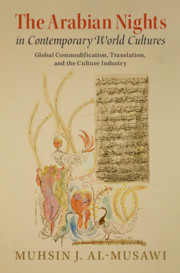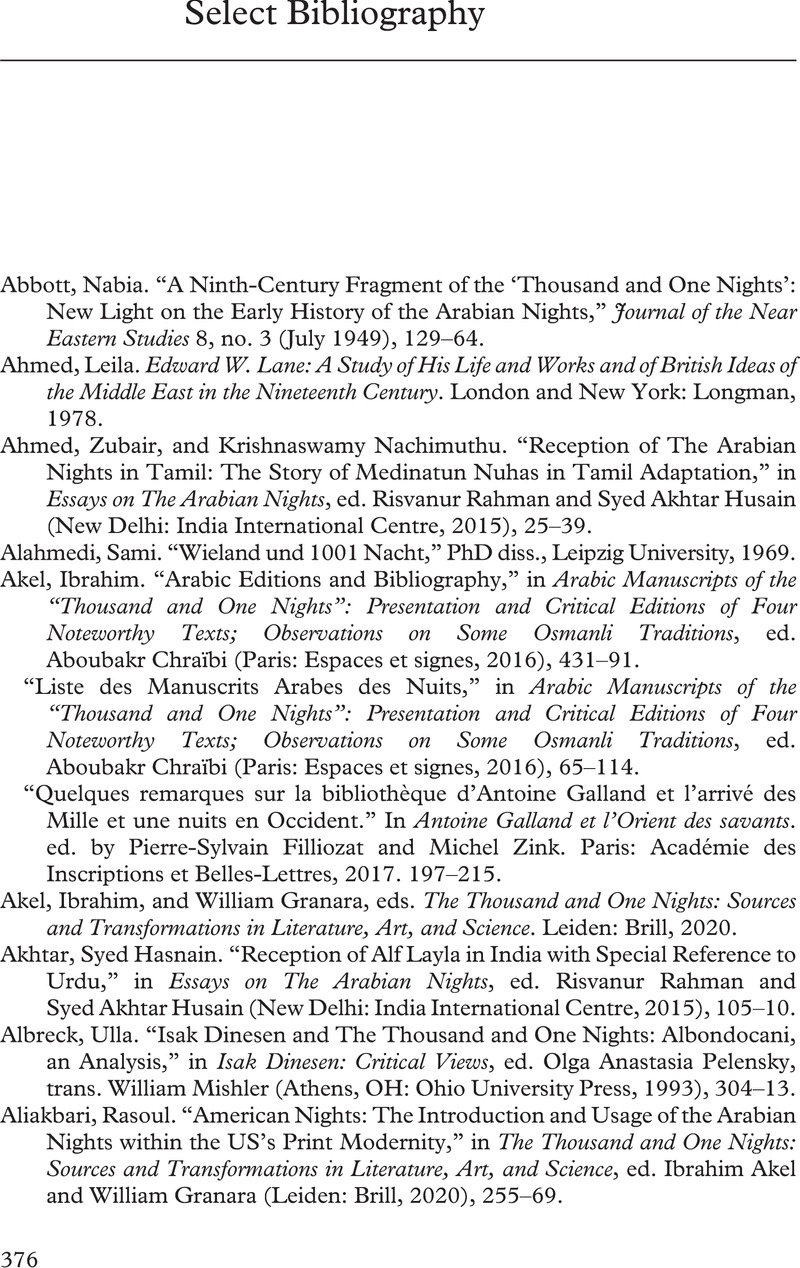 The Arabian Nights in Contemporary World Cultures
The Arabian Nights in Contemporary World Cultures Book contents
- The Arabian Nights in Contemporary World Cultures
- Frontispiece
- The Arabian Nights in Contemporary World Cultures
- Copyright page
- Dedication
- Contents
- Figures
- Acknowledgments
- Introduction
- 1 The Arabian Nights
- 2 The Scheherazade Factor
- 3 Engagements in Narrative
- 4 The “Hostile Dynasty”
- 5 The Archaeology of A Thousand and One Nights
- 6 Signatures and Affiliates
- 7 Decolonizing the Arabian Nights?
- 8 Invitation to Discourse
- Book part
- Select Bibliography
- Index
- References
Select Bibliography
Published online by Cambridge University Press: 17 August 2021
- The Arabian Nights in Contemporary World Cultures
- Frontispiece
- The Arabian Nights in Contemporary World Cultures
- Copyright page
- Dedication
- Contents
- Figures
- Acknowledgments
- Introduction
- 1 The Arabian Nights
- 2 The Scheherazade Factor
- 3 Engagements in Narrative
- 4 The “Hostile Dynasty”
- 5 The Archaeology of A Thousand and One Nights
- 6 Signatures and Affiliates
- 7 Decolonizing the Arabian Nights?
- 8 Invitation to Discourse
- Book part
- Select Bibliography
- Index
- References
Summary

- Type
- Chapter
- Information
- The Arabian Nights in Contemporary World CulturesGlobal Commodification, Translation, and the Culture Industry, pp. 376 - 398Publisher: Cambridge University PressPrint publication year: 2021


